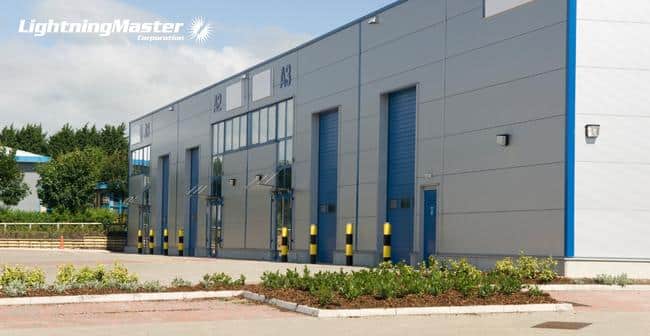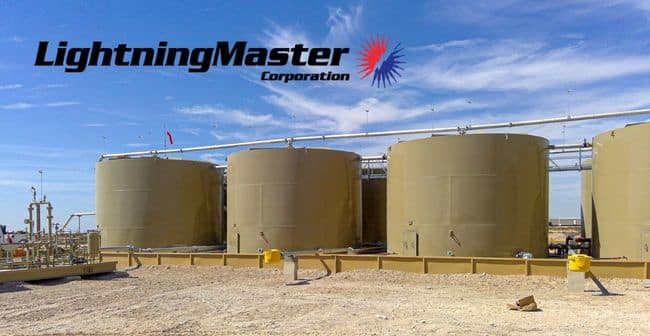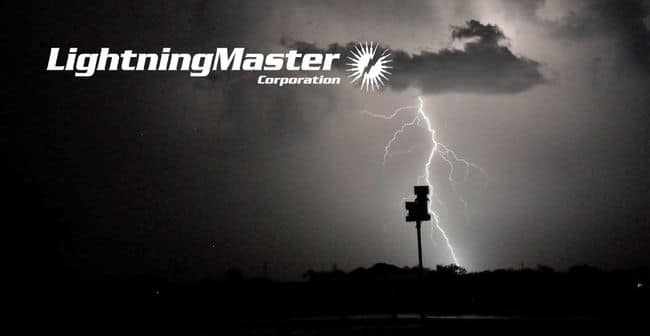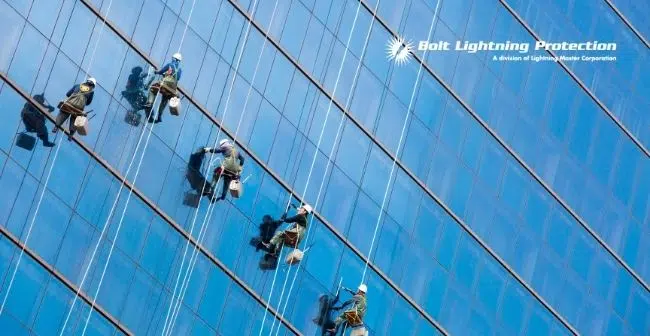Recently, our sales team has been getting calls beginning with, “Ahhhhh, I have a really weird situation that we need lightning protection for….”. We can be fairly certain it is for a creative container to store crude oil. With the present glut in crude oil and limited storage capacity, we are seeing all types of innovative containers being pressed into temporary service to store crude.
Providers of these containers are running into problems when required by the owner/operators and their insurance carriers to provide lightning protection for these containers. Often, a Lightning Master system is specified, but, being outside the petroleum industry, these new players have no idea what that entails. Fortunately, we have the expertise and manufacturing capacity to provide protection for virtually any storage application.
To secure an appropriate, cost-effective system, it is important to work with an experienced supplier. Lightning Master is the industry leader in designing and providing lightning and static protection for petroleum storage tanks. As a 25+ year principal member of National Fire Protection Association NFPA 780, the US lightning protection standard, and a member of American Petroleum Institute API 545, the standard for lightning protection for above ground storage tanks, Lightning Master literally helped write the book on this subject. We know the principles and requirements for lightning protection design and components, so can readily adapt them to accommodate unusual and non-standard containers
Additionally, Lightning Master is a UL certified lightning protection system designer and installer and a UL Listed manufacturer of lightning protection components. All Lightning Master parts are made in the USA at our Clearwater, Florida factory. We can quickly and efficiently make any custom parts required for tanks of various configurations. We have the manufacturing capacity to fulfill rising demand. For long-term cost effectiveness, we design systems so that parts may be re-used in eventual permanent facilities
Regarding lightning protection for your tanks in petroleum storage applications, please consider the following. National Fire Protection Association NFPA 780, “Standard for the Installation of Lightning Protection Systems”, is the US lightning protection standard. American Petroleum Institute API 2003, “Protection Against Ignitions Arising Out of Static, Lightning and Stray Currents”, and API 545, “Recommended Practice for Lightning Protection of Aboveground Storage Tanks for Flammable or Combustible Liquids”, are the industry standards for protecting petroleum storage tanks.
Unconventional tanks present a challenge for lightning protection system design. If these tanks are equipped with a “soft” roof, there is no practical and cost-effective way to provide a zone of protection that encompasses the middle of the tank. Therefore, the system Lightning Master has designed for these tanks uses the principles contained in these standards to the maximum extent practicable.
A lightning protection system consists of three basic components: the air terminals (lightning rods), a grounding system, and conductors running between them. The Lightning Master system provides all three components in a system designed to accommodate these tanks specifically.
This Lightning Master system employs UL Listed air terminals per NFPA 780, 7.3.3.1. These air terminals are designed to delay the timing of the formation of lightning-completing streamers from the tank shell rim to lessen the probability of a direct strike to the tank. They also control the accumulation of static on the tank in much the same manner as do static wicks on airplanes.
Secondarily, the air terminals are designed to intercept any strike to the tank shell rim and convey the energy to ground, lifting the attachment point upward and outboard of the stored product. Because the air terminals are mounted on the tank with the tips extending upward and outward from the tank rim, the temperature rise would also be located away from the tank rim, thereby reducing the likelihood of ignition, as required by NFPA 780, 7.3.3.2.
In most cases, the conductor system consists of the tank shell itself. If it is metal and 3/16” thick, it meets the requirements of NFPA 780, 4.9.3.3.
Grounding is provided by the inherent self-ground properties of flat-bottom metal tanks, and/or by conventional ground rods or plates installed around the perimeter of the tank to meet the requirements of NFPA 780, 4.9.10.1.
Notes:
Although API and NFPA 780 allow the use of pressure/vacuum relief valves at the opening of venting pipes, best practices would dictate the use of a flame arrestor at each such opening.
Regarding the effect of coatings on static protection, American Petroleum Institute API 2003, 4.6.6, says that metal containers with internal coatings or linings up to 2 mm (80 mils) in thickness may be treated as an uncoated metal container. However, best practices would encourage the use of bonding between the tank shell plates and between the floor and primary and secondary roof membranes at a minimum of the location of the lightning protection grounds.
The word on the street is that producers may eventually need to store crude oil in swimming pools. The good news is that Lightning Master already has a lightning protection system designed for that.




